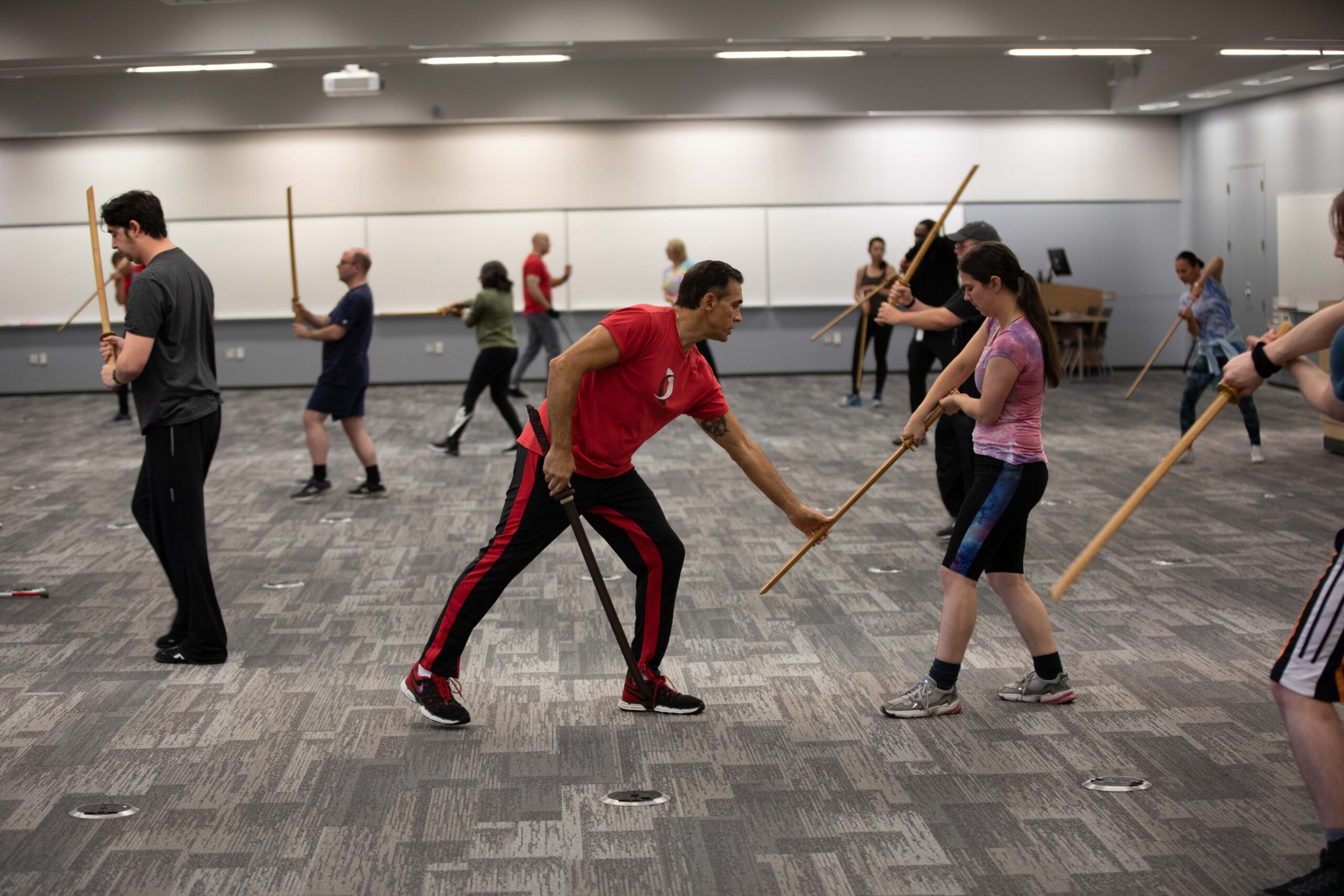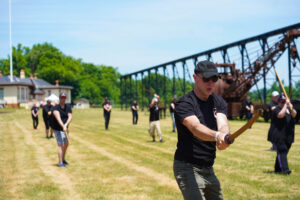
Boosting Employee Morale with Sword Fighting: How Sword Fighting Builds Trust and Teamwork in the Workplace
Let’s face it “Team-Building” has become corporate code for forced small talk and lukewarm coffee in a beige conference room. Your coworkers don’t want to build spaghetti towers or fall backwards into each other’s arms while pretending that’s a meaningful trust exercise. They want something cool. Something memorable. Something different. Something that has been the way numerous civilizations have survived and developed. Something that is still ingrained in our DNA. Swords.
Enter: The Sword Experience.
Yes, it’s real. No, you don’t have to be a medieval reenactor or closet ninja to do it. But if you’ve ever wanted to give Steve from accounting a totally safe, choreographed smack with a bokken while laughing about footwork—this is your moment.
Sword fighting might seem like a strange office bonding strategy, but under the dramatic swings and cinematic flair lies a surprisingly effective toolkit for workplace success. Because nothing says “trust” like standing opposite someone with a weapon and relying on them not to accidentally thwack your elbow.
However, the most important thing that sword fighting teaches you and your staff is the ability to understand the difference between an opponent and a partner. it’s one of the most common comments we get when hearing from companies and individuals who take our corporate events.
So let’s delve into how sword training slices through awkwardness and builds actual team connection:
1. Instant Trust (or Mild Peril-Driven Bonding)
Sword choreography requires more than just swinging sticks around—it demands timing, awareness, and actual communication. One of the reasons we work with an attack and defense numbering system , so that you and your partners understand how and when to strike or defend. Then, you have to listen to your partner’s cues. You have to watch their movements, so that not only will you both make the sequence look cool and realistic, but you accomplish this by learning to work together, not just side-by-side, but in sync. Suddenly, your team isn’t just a Slack channel. It’s a unit.
2. Shared Vulnerability (in Matching Foam Gear)
Nothing levels the office playing field like watching your boss mess up a sword combo. When everyone’s learning together—messing up together, laughing together—it breaks down those stiff professional walls. You’re not manager and intern anymore. You’re co-warriors, desperately trying not to trip during an attack, spin or simple defensive movement. It brings you closer to your co workers and maybe, just maybe, you’ll be able to reference the aspects you learned, not only in your every day life, but in your work environment.
3. Physical Engagement Beats PowerPoint Fatigue
Sword Experience events get people moving. It is probably the best non weight bearing, physical workout that there is. It’s not a passive lecture. It’s a full-body, immersive workout disguised as fun, that tests your legs, arms and every part of your body. Take just the swing for instance. Not only are the wrists, elbows, forearms, shoulders and back engaged, but if you do it correctly with the footwork, you’ll leave with a great cardio workout, that you didn’t realize you were doing. Employees leave energized, not drained. (And possibly sore in some deeply confusing muscles.)
4. Real Communication, Minus the Buzzwords
Sword choreography forces clear, direct, and instant communication. No corporate jargon. No “circling back.” Just “You step left, attack right, I duck left, then we’ll clash and make it epic. ” Teams who train this way start talking differently—more openly, more effectively. Plus, they become more creative. How? Well, once the rigid direction of the strikes are safely learned, the creative part of swordplay begins to happen in between the choreography. Adrian always gives the example of watching an action movie. During the action scenes you see the amazing effects, stunts and movements, but really, you are watching the interplay between the characters. So, when you start putting your own spin on the beats in between the sword play, you’re effectively tapping into your creative side, which later translates into the workplace, or at home, by accessing a part of the brain that solves problems. Also, people use way more sound effects than in meetings so they have way more fun. Win-win.
5. Memories That Don’t Involve a Zoom Call
People don’t remember another budget meeting. They do remember locking blades with Cheryl from sales, while a former Highlander actor gives them tips on form, communication and movement. Sword fighting doesn’t just create skills—it creates stories. And stories are what build teams that last.
So, the next time you’re planning a company retreat, skip the trust falls and vision boards. Bring your team to a Sword Experience event instead. Let them sweat. Let them laugh. Let them duel (safely). Because when the swords come out, the walls come down—and that’s when the real teamwork begins.
No approved comments yet.

Leave a Reply